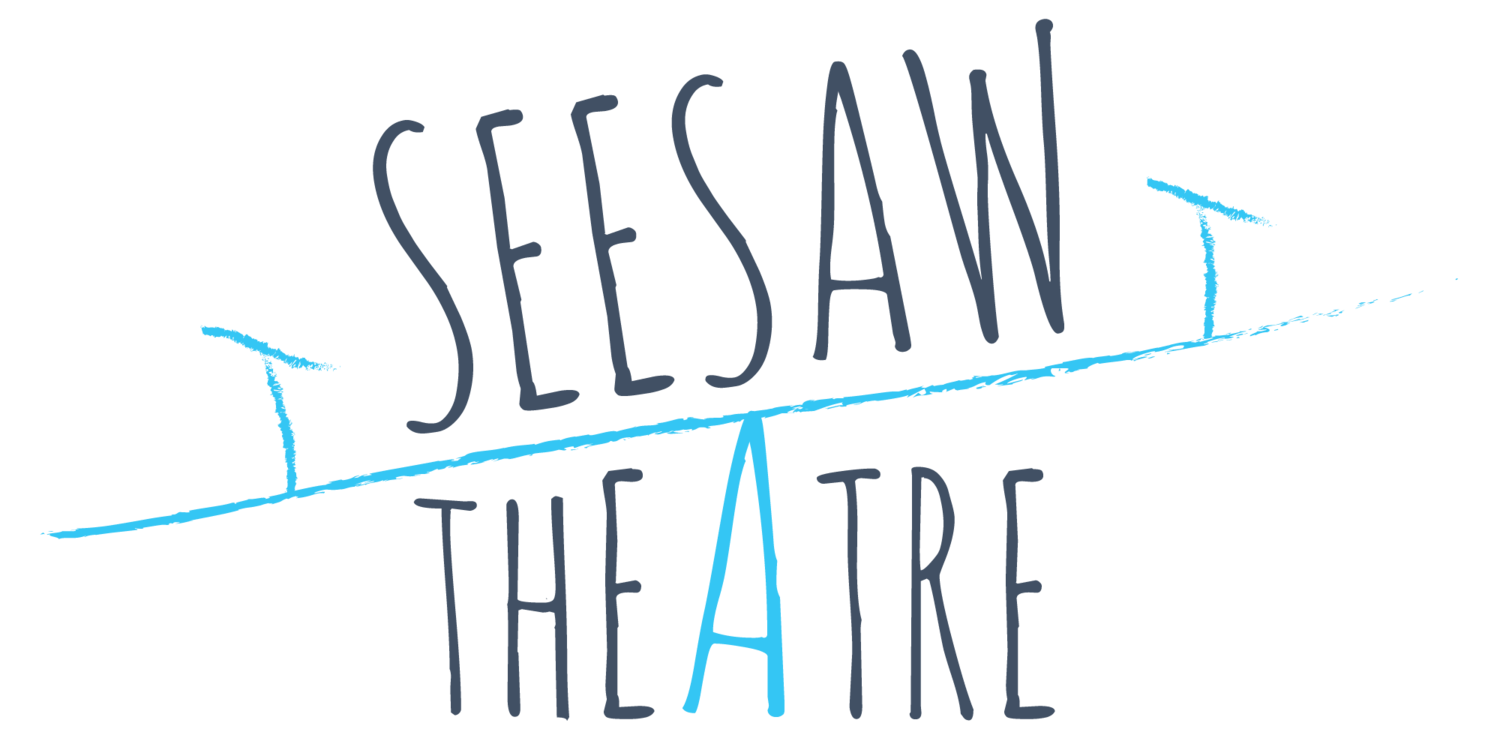Seesaw Theatre? Let me confess this right up front—I am a fan. I love this group and the work they do. For its vision, compassion, courage, and artistry, Seesaw is a company to be celebrated. Student initiated and student run, Seesaw represents the best of what happens at Northwestern. Maybe the best of what happens in theatres, anywhere.
Last spring I attended the New Visions/New Voices conference at the Kennedy Center in Washington D.C. This symposium is dedicated to the creation of new works and the development of trailblazing trends. At New Visions/New Voices we heard a dynamic presentation from Talleri McRae, a Northwestern graduate and an internationally renowned expert on Inclusive Arts. In her remarks, she told us of the newly formed International Inclusive Arts Network, a global initiative of theatre artists from such places as Hong Kong, South Africa, Ireland, Serbia, and Australia. McRae serves as one of two USA representatives on the Core Group of the Founding Steering Committee. The assembled audience roared its approval of this brand new network that honors theatre for ALL and has at its heart the involvement of disabled artists and/or engagement with disabled young people. McRae was off to Warsaw the next day for the inaugural meeting of the International Inclusive Arts Network. The room was abuzz with excitement, and for many, this was something new. Meanwhile, back in humble Shanley Pavilion on the Northwestern campus, the Seesaw Theatre Company is way ahead of the curve. That which is being heralded globally is happening in own back yard. A devoted group of talented, tireless undergraduates, undaunted and endlessly imaginative, is making something extraordinary happen in Evanston.
In Washington D.C., McRae challenged us as artists and educators to reframe the idea of inclusive theatre. "We (theatre artists) can re-define disability by not embracing it as an individual impairment, but rather as an environmental limitation that can catalyze the creative artistic process." As she spoke, her voice grew impassioned, because boundaries have always fueled creativity; limitations have always given rise to innovation. “Inclusion is,” she asserted, “ultimately, a wildly and radically creative act.”
Wildly creative – these are good words to describe the Seesaw Theatre. In form and content, their plays don’t resemble anything else you will see. Hours of research and planning go into each production. There are no published scripts for young people on the Autism spectrum, but the Seesaw team has the courage to brave the blank page and the empty space and create something entirely new, from scratch as it were. Narrative is less important than in traditional theatre – plot is loosely structured and is much less significant than the overarching adventure that the Seesaw guests will experience. Senses come alive here – a gentle spritz of water, the touch of soft, fuzzy yarn, a song sung to the strummed accompaniment of a guitar. Everything is child friendly. The space is designed to be safe; it’s okay to get up and move during the play. Adventure Guides stay with the young audience members, making real connections. Whether their guests are invited under the sea, into a world of string, or into a land of games, the experience becomes unforgettable for everyone.
The performance I observed might better be described as 15 individual performances under the umbrella of a larger adventure. The world was colorful, but gentle. Each child in the audience was met at the entrance by a Seesaw company member, one who had done special preparation to meet this particular child and make her or him feel safe and welcome. Teachers sat at the perimeter of the experience, observing, while the college students and children embarked on an adventure. The event seemed carefully structured, but only partially scripted, allowing the company members to interact authentically with the children. The Autism spectrum remains mysterious to me, but I can tell you that there were heartfelt smiles, enthusiastic sing-a-longs, and some great, unbridled dance moves. The college students showed endless patience and boundless resourcefulness. And the teachers? The ones observing? They were frequently brushing away tears. “This just doesn’t happen. I’ve never seen him connect like that.” The room was alive; hearts were full. The power and beauty of the theatre was harnessed in the service of the children. The children, in return, gave back. It was impossible to see this and not be moved.
McRae has written, “I believe professional TYA can change the way an entire generation of citizens understands disability.” She goes on to add, “I know what you are thinking—this one sounds a little lofty. Yes, it does. Yet I believe one positive choice can create endless ripples. If professional TYA companies around the globe intentionally embraced inclusive arts, where would the impact end?” Seeing Seesaw Theatre weave its spell, one that is as beneficial for the college artists as it is for the children they serve, I can’t help but believe that McRae may be right. Keep making ripples Seesaw Theatre. Have faith. You are at the vanguard, making a difference.
Rives Collins

